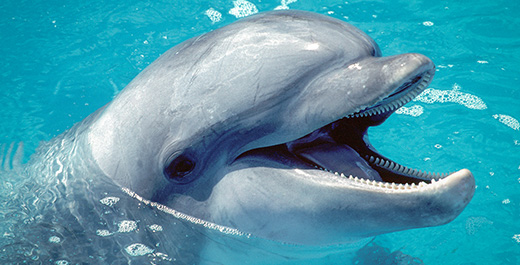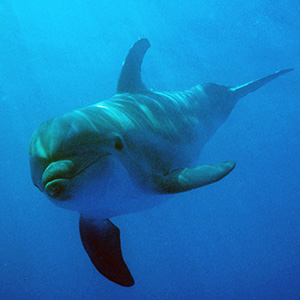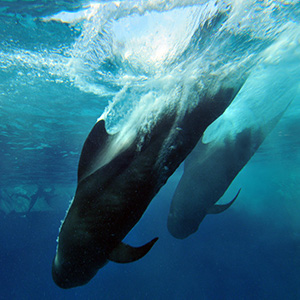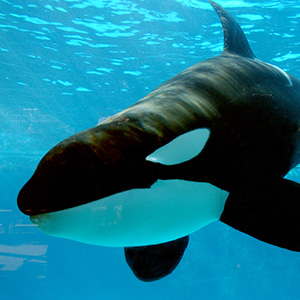Order - Cetacea
Cetacea is a scientific order of large aquatic mammals that have forelimbs modified into flippers, a horizontally flattened tail, one or two nostrils at the top of the head for breathing, and no hind limbs. Cetaceans include all whales, dolphins, and porpoises.
Biochemical and genetic studies suggest that even-toed ungulates (sheep, cows and giraffes, for example), especially hippopotamuses (family Hippopotamidae), are cetaceans’ closest living terrestrial relatives. These animals and whales probably share a common ancestor.
Recently, some scientists suggest that since cetaceans genetically and morphologically fall within the artiodactyl clade, they should be included in the order Cetartiodactyla.
The word "cetacean" is derived from the Greek word for whale, kētos.
Living cetaceans are further divided into two suborders: the Odontoceti (toothed whales) and the Mysticeti (baleen whales).
Suborder - Odontoceti
Odontoceti is a scientific suborder of whales characterized by having teeth and a single blowhole. The word "Odontoceti" comes from the Greek word for tooth, odontos.

Family - Delphinidae
Scientists group most dolphins in the scientific family Delphinidae, part of the suborder Odontoceti. Delphinids (at least 36 species of ocean dolphins) include such well-known dolphins as bottlenose dolphins and common dolphins, as well as pilot whales and killer whales

bottlenose dolphin, Tursiops truncatus

short-finned pilot whales, Globicephala macrorhynchus

killer whales, Orcinus orca
Genus, species - Tursiops truncatus
Tursiops, which translates as "dolphin-like," is derived from the Latin word Tursio for "dolphin" and the Greek suffix –ops for "appearance".
Most scientists currently recognize two species of bottlenose dolphin: the common bottlenose dolphin, Tursiops truncatus and the Indo-Pacific bottlenose dolphin, Tursiops adunctus.
As additional studies are conducted around the world, there may be further changes to Tursiops spp. taxonomy. The advent of molecular taxonomic techniques will further help eliminate confusion.
The species was described by researcher Montagu in 1821. The species name Tursiops truncatus was derived from natural wear exhibited on the teeth of the specimen Montagu observed. It was apparently an old animal with worn (truncated) teeth. He thought (incorrectly) that worn teeth were an identifying characteristic of the species.
Fossil Record
Scientists believe that early whales arose 50 million years ago from (now extinct) primitive mammals that ventured back into the sea. Two small, rod-shaped pelvic bones, buried deep in the body muscle of toothed whales, may be remnants of the hind limbs of these primitive mammals.
Modern forms of both odontocetes and mysticetes appear in the fossil record 5 to 7 million years ago.
- Archaeoceti is a sub-group of cetaceans that are now extinct. Fossil records of these animals show different evolutionary changes from the early Eocene (55-35 million years ago) to the Oligocene (35-25 million years ago).
- The genus Tursiops first appears in the fossil record about 5 million years ago. Remains of Tursiops truncatus appear in the fossil record approximately 2 million years ago.